What Lives in Kancha Gachibowli? A Closer Look at Hyderabad’s Urban Forest
(Featured image courtesy Cornell (L) and India Today (R))
Have you ever walked through a forest that sings with birdsong and hums with quiet life, right in the heart of a bustling city?
Tucked beside the University of Hyderabad lies Kancha Gachibowli — a serene green expanse known for its rich biodiversity, age-old trees, and quiet trails. For decades, this patch of forest has not only been a sanctuary for wildlife but also a living classroom and place of solace for students, researchers, and local residents alike.
A quiet forest in the middle of the city
Spread across a large area adjoining the university campus, this forested region is a vibrant ecosystem. With Hyderabad rapidly expanding into a concrete jungle, spaces like Kancha Gachibowli offer a rare and vital contrast: old-growth trees, natural grasslands, and undisturbed terrain that breathe life into the urban landscape.
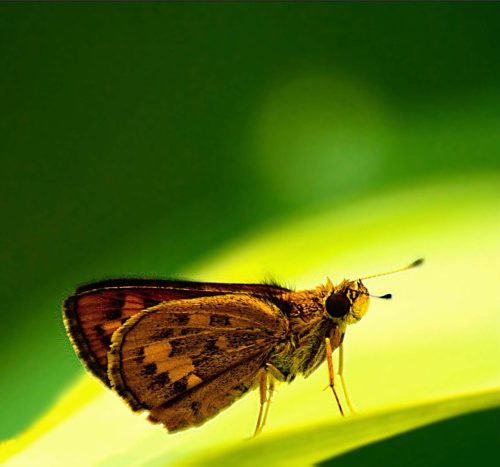 Dart Butterfly: Tiny but vital, this butterfly helps pollinate the entire ecosystem. Picture source: Wiki
Dart Butterfly: Tiny but vital, this butterfly helps pollinate the entire ecosystem. Picture source: Wiki
In recent weeks, the area has come under the public eye due to discussions about proposed development, including the construction of a new road that may pass through this ecologically sensitive zone. While conversations continue, it’s an opportunity to pause and reflect on what makes this place special and why spaces like these matter now more than ever.
What lives here? A glimpse into local biodiversity
Did you know that over 700 species of flowering plants have been documented here? The forest is alive with colour in every season, from subtle orchids to flamboyant flame-of-the-forest blooms.
And then, there are the birds. Around 220 species of birds call this place home, including the Indian roller, the bright blue state bird of Telangana, and the sweet-singing Oriental skylark. During certain seasons, migratory birds make a pitstop here, too, resting in the canopy before continuing their journey across the subcontinent.
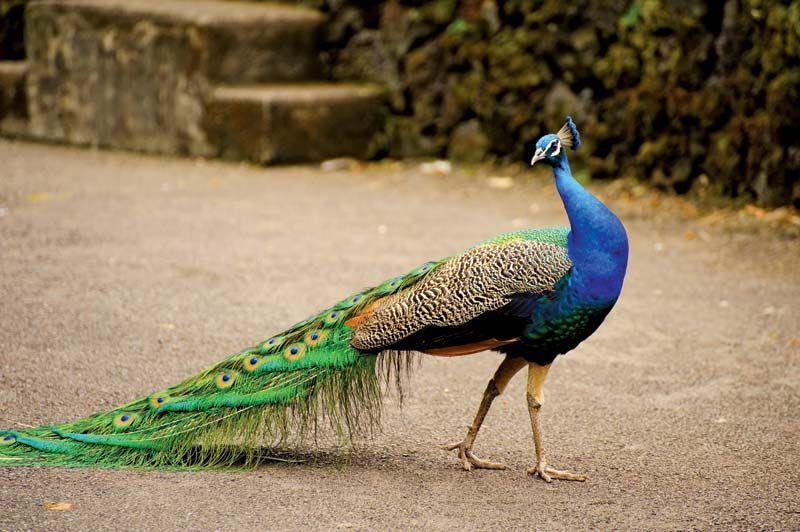 Peacock: Our national bird breeds, nests, and dances in this forest. If it turns to concrete, that beauty disappears with it. Picture source: Brittanica
Peacock: Our national bird breeds, nests, and dances in this forest. If it turns to concrete, that beauty disappears with it. Picture source: Brittanica
The wildlife here isn’t limited to birds alone. If you tread softly and stay alert, you might spot spotted deer, wild boars, or even shy porcupines scuttling away into the underbrush. The forest is also home to monitor lizards, snakes, and amphibians, each playing a role in the delicate food web.
Perhaps most intriguingly, Kancha Gachibowli is one of the only known habitats of the Hyderabad tree trunk spider (Murricia hyderabadensis), a species found nowhere else in the world. Its presence is a quiet reminder of how unique and irreplaceable this landscape really is.
Some key species found in Kancha Gachibowli
- Hyderabad Tree Trunk Spider (Murricia hyderabadensis) – an endemic species found nowhere else in the world
- Indian Roller – the bright blue state bird of Telangana
- Oriental Skylark – known for its melodious song
- Spotted Deer – often seen in small herds
- Wild Boars – elusive but present in the deeper forest areas
- Porcupines – shy and nocturnal, usually spotted near thick vegetation
- Monitor Lizards – crucial for pest control in the food web
- Bronze-Backed Tree Snake – a non-venomous snake native to this region
- Common Indian Toad & Paddy Field Frog – key amphibians in the monsoon season
- Flame of the Forest (Butea monosperma) – a vibrant native tree species
- Ground Orchids & Wild Jasmine – part of the 700+ flowering plant species recorded here
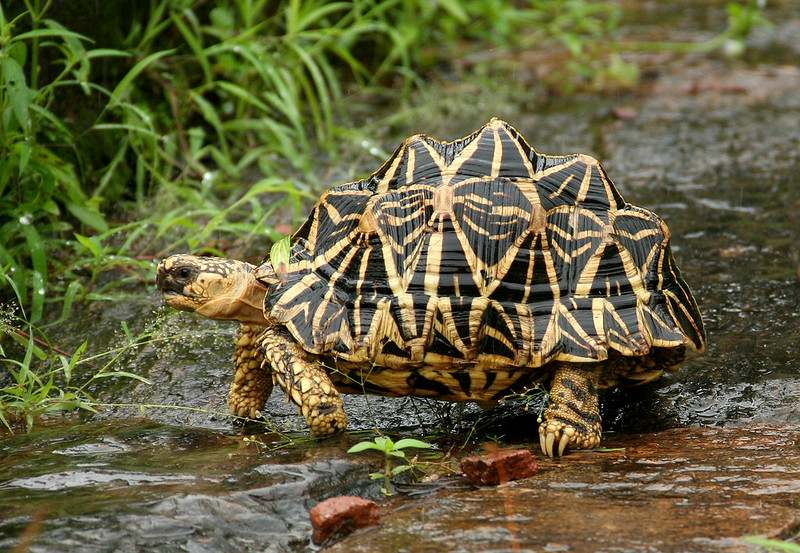 Indian Star Tortoise: Smuggled worldwide for its beauty, this vulnerable species still finds refuge here. Picture source: Mongabay
Indian Star Tortoise: Smuggled worldwide for its beauty, this vulnerable species still finds refuge here. Picture source: Mongabay
A forest that protects the city too
Beyond its visual and ecological beauty, this forest performs essential services — what scientists call ecosystem services. The trees here help lower the ambient temperature of surrounding areas, especially during Hyderabad’s sweltering summers. A recent study pointed out that losing such cover could lead to a rise in temperature by as much as 1.4°C locally.
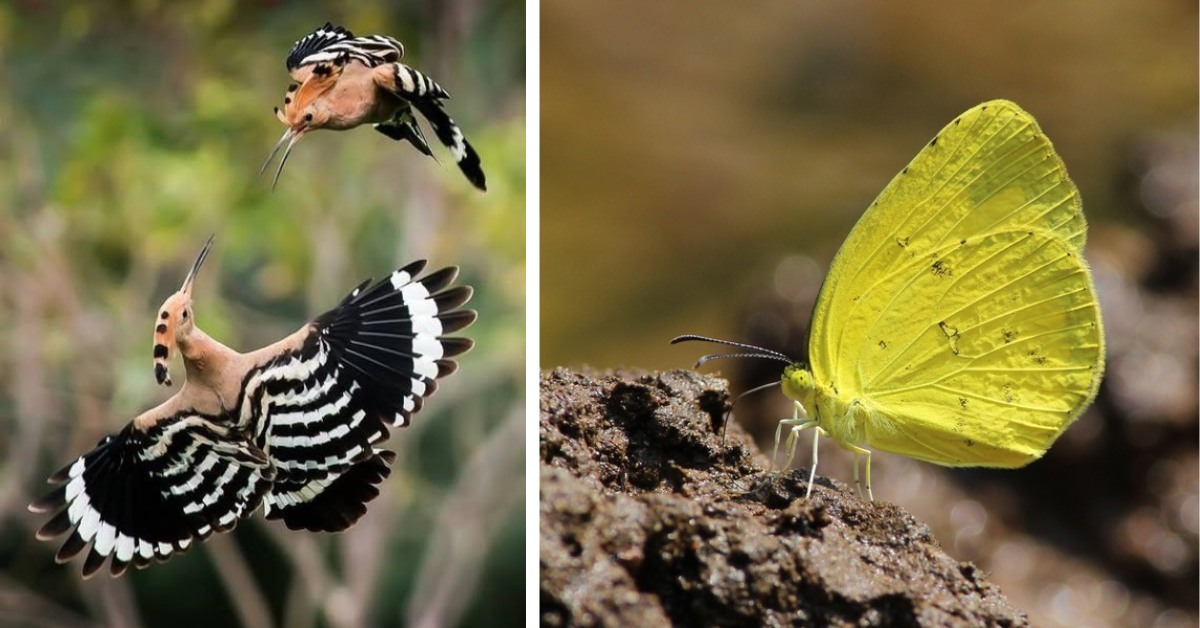 Indian Hoopoe (L) and Grass Yellow butterfly (R)
Indian Hoopoe (L) and Grass Yellow butterfly (R)
The green cover also helps improve air quality, recharge groundwater, and prevent soil erosion. These are benefits that extend far beyond the forest itself.
Why preserving this matters
At a time when many Gen Z and millennial citizens are becoming increasingly conscious of environmental issues, this forest presents an opportunity, not just to conserve a natural space, but to actively engage with it.
University students use Kancha Gachibowli as an open-air classroom, conducting field research, biodiversity mapping, and birdwatching walks. Schools in the area bring children here to learn about native trees and insects firsthand. Local residents visit for quiet morning walks, nature photography, and community clean-up drives that have helped keep the space thriving.
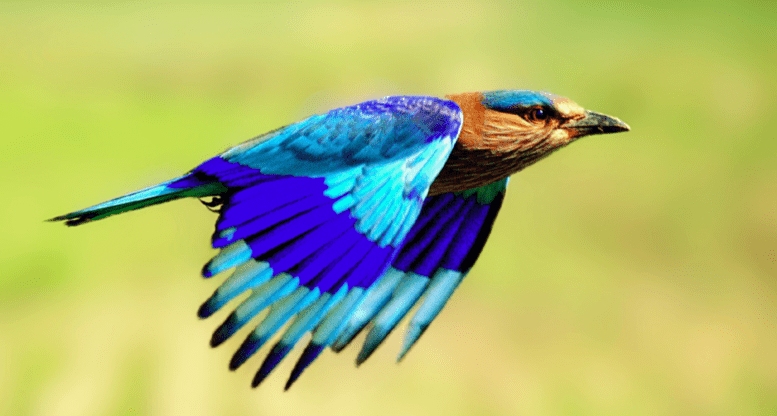 The Indian Roller is Telanga’s state bird and a symbol of pride. Picture source: Greenverz
The Indian Roller is Telanga’s state bird and a symbol of pride. Picture source: Greenverz
Environmental scientists have also flagged the forest as a potential site for long-term urban ecology studies — something almost impossible to undertake in fragmented or manicured green spaces.
To preserve a place like Kancha Gachibowli is to preserve more than trees — it’s to keep alive a rare space where learning, community well-being, and urban biodiversity intersect. It’s a commitment to coexisting with nature in the middle of a concrete city, not just for this generation but for the ones that follow.
Sources
News